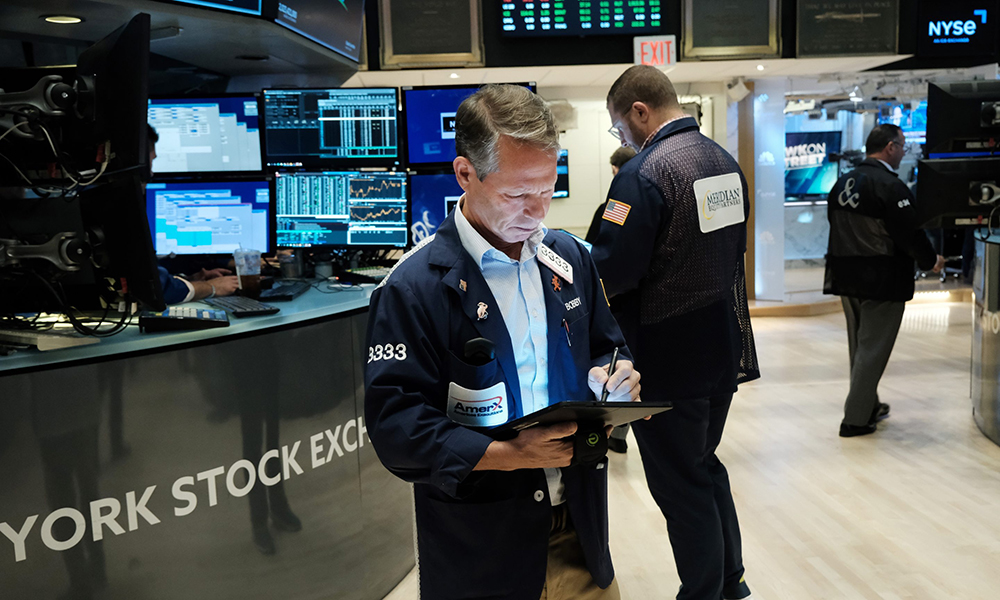
雖然嚴重倒掛的收益率曲線令投資者對經濟衰退的前景感到焦慮,但高盛集團(Goldman Sachs)卻傳達了不同信息:不要再擔心這個指標。
高盛集團的首席經濟學家簡·哈祖斯在7月17日的報告中寫道:“我們并不認同普遍存在的對收益率曲線倒掛的擔憂。”低于預期的美國通脹報告在上周發布后,他將對美國經濟衰退概率的預測從25%下調到20%。
哈祖斯的觀點與大多數投資者截然不同。大多數人認為收益率曲線倒掛幾乎一定預示著經濟下行。在過去7次美國經濟衰退發生之前,都出現了三個月期國債的收益率超過10年期國債的情況。目前,短期債券收益率比長期債券收益率高150多個基點,接近于四十年來最大的收益率曲線倒掛。
正常情況下,收益率曲線呈上升趨勢,因為投資者要求持有長期債券的報酬或期限溢價高于短期債券。哈祖斯解釋稱,當收益率曲線倒掛時,這意味著投資者認為美國降息的幅度,足以對期限溢價產生嚴重影響,只有當經濟衰退風險變得“顯而易見”時才會出現這種現象。
但這位經濟學家表示,這一次情況有所不同。這是因為期限溢價“遠低于”其長期平均水平,因此只要更小的預期降息幅度就能夠逆轉收益率曲線。此外,哈祖斯認為,隨著通脹降溫,這為美聯儲(Federal Reserve)在避免引發經濟衰退的情況下放寬利率提供了一條“可行的道路”。
哈祖斯還指出,當經濟預測變得過度悲觀時,就會給長期利率帶來超出合理范圍的下行壓力。
他寫道:“因此,退一步來講,認為收益率曲線倒掛確認了經濟衰退主流預測的觀點,至少是循環論證。”(財富中文網)
譯者:劉進龍
審校:汪皓
雖然嚴重倒掛的收益率曲線令投資者對經濟衰退的前景感到焦慮,但高盛集團(Goldman Sachs)卻傳達了不同信息:不要再擔心這個指標。
高盛集團的首席經濟學家簡·哈祖斯在7月17日的報告中寫道:“我們并不認同普遍存在的對收益率曲線倒掛的擔憂。”低于預期的美國通脹報告在上周發布后,他將對美國經濟衰退概率的預測從25%下調到20%。
哈祖斯的觀點與大多數投資者截然不同。大多數人認為收益率曲線倒掛幾乎一定預示著經濟下行。在過去7次美國經濟衰退發生之前,都出現了三個月期國債的收益率超過10年期國債的情況。目前,短期債券收益率比長期債券收益率高150多個基點,接近于四十年來最大的收益率曲線倒掛。
正常情況下,收益率曲線呈上升趨勢,因為投資者要求持有長期債券的報酬或期限溢價高于短期債券。哈祖斯解釋稱,當收益率曲線倒掛時,這意味著投資者認為美國降息的幅度,足以對期限溢價產生嚴重影響,只有當經濟衰退風險變得“顯而易見”時才會出現這種現象。
但這位經濟學家表示,這一次情況有所不同。這是因為期限溢價“遠低于”其長期平均水平,因此只要更小的預期降息幅度就能夠逆轉收益率曲線。此外,哈祖斯認為,隨著通脹降溫,這為美聯儲(Federal Reserve)在避免引發經濟衰退的情況下放寬利率提供了一條“可行的道路”。
哈祖斯還指出,當經濟預測變得過度悲觀時,就會給長期利率帶來超出合理范圍的下行壓力。
他寫道:“因此,退一步來講,認為收益率曲線倒掛確認了經濟衰退主流預測的觀點,至少是循環論證。”(財富中文網)
譯者:劉進龍
審校:汪皓
While the deeply inverted yield curve has stoked anxiety among investors about the prospect of a recession, Goldman Sachs has a different message: stop worrying about it.
“We don’t share the widespread concern about yield curve inversion,” Jan Hatzius, the bank’s chief economist wrote in a note on July 17, cutting his assessment of the probability of a recession to 20% from 25%, following a lower-than-expected inflation report last week.
Hatzius stands in opposition to most investors who point out that the curve inversion has an almost impeccable track record of foretelling economic downturns. The three-month T-bills yielded more than 10-year notes before each of the past seven US recessions. Currently, the short-term yields are more than 150 basis points above the longer-maturity notes, close to the biggest inversion in four decades.
Normally, the curve is upward sloped because investors demand higher compensation — or term premium — for holding longer-maturity bonds than short-term ones. When the curve turns upside down, it means investors are pricing in rate cuts large enough to overwhelm the term premium, such a phenomenon only occurs when recession risk becomes “clearly visible,” Hatzius explained.
This time, though, things are different, the economist said. That’s because term premium is “well below” its long-term average, so it takes fewer expected rate cuts to invert the curve. In addition, as inflation cools, it opens “a plausible path” to the Federal Reserve easing up on interest rates without triggering a recession, according to Hatzius.
When economic forecasts became overly pessimistic, Hatzius added, they put downward more pressure on longer-term rates than justified.
“So the argument that the inverted curve validates the consensus forecast of a recession is circular, to say the least,” he wrote.






